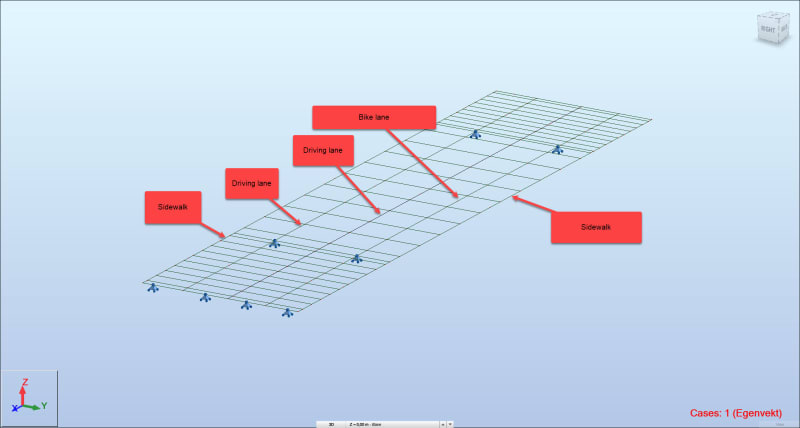bojoka4052
Mechanical
This is a bridge with five different lanes (Sidewalk, Driving lane, Driving lane, Bike lane and sidewalk).

This is how my beam element model looks, each beam in the longitudinal direction (x-direction) represents a lane. Supports are all roller supports.

The loads I have that can be on or off are brake loads from when the car brakes, wear layer that can be on or off, people can be walking on one or two lanes, people can be biking, cars can be driving on none of the lanes or both lanes etc. This creates many possible load combinations. I was wondering if people could help me figure out what are the worst case possible load combinations that could occur, and what load combinations I can look away from as they most likely wont be too bad? The bridge is about 40-50 m long.

This is how my beam element model looks, each beam in the longitudinal direction (x-direction) represents a lane. Supports are all roller supports.

The loads I have that can be on or off are brake loads from when the car brakes, wear layer that can be on or off, people can be walking on one or two lanes, people can be biking, cars can be driving on none of the lanes or both lanes etc. This creates many possible load combinations. I was wondering if people could help me figure out what are the worst case possible load combinations that could occur, and what load combinations I can look away from as they most likely wont be too bad? The bridge is about 40-50 m long.

![[smile] [smile] [smile]](/data/assets/smilies/smile.gif) .
.